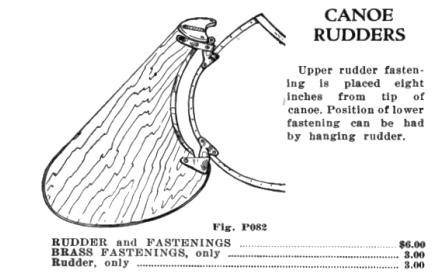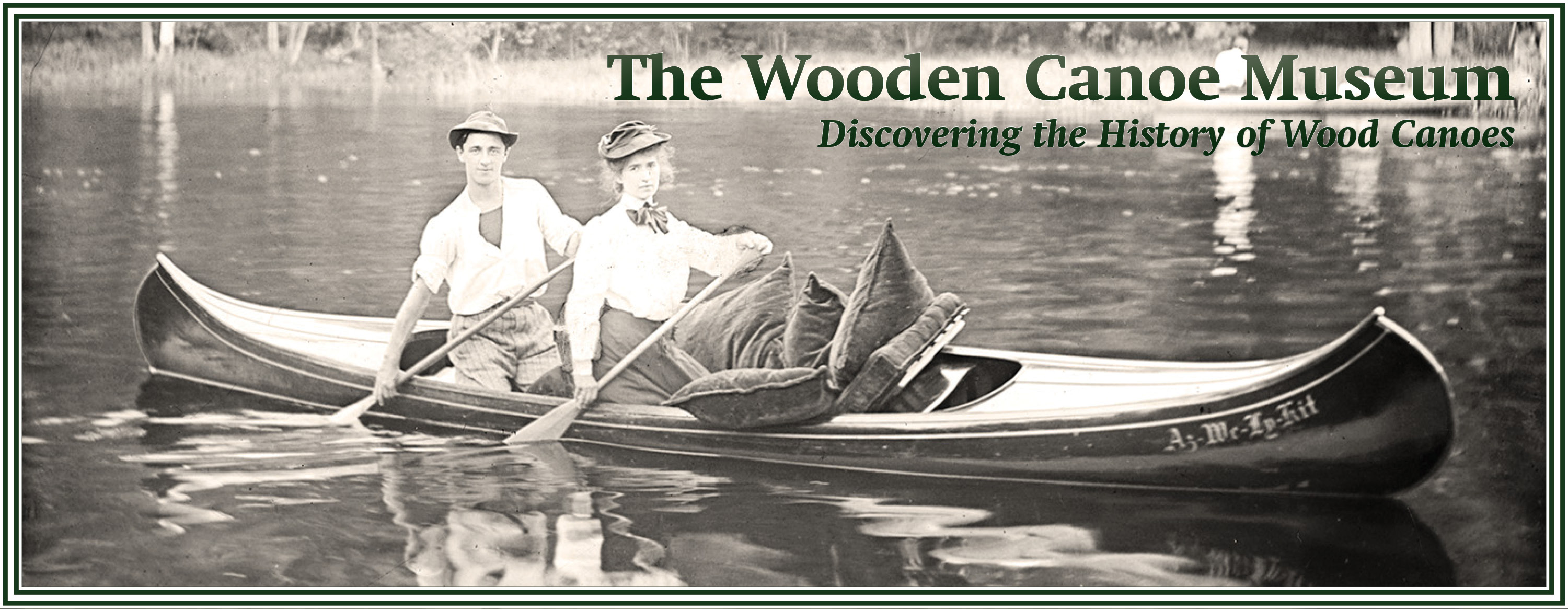Many folks are surprised to hear that a canoe can be sailed. Indeed, it was quite popular, and canoe sailing has seen a resurgance in popularity in recent years. Old Town canoes are by far the most common wooden canoe encountered, and Old Town offered sail rigs for their canoes continuously starting in 1908 and continuing through 1978. As a canoe restorer, I am often asked about the bits and pieces that are used to set up an Old Town canoe for sail, so I have put this guide together to help describe Old Town sailing rigs. The images come from the 1942 Armstrong and Galbraith catalog. Armstrong and Galbraith were Old Town agents, and the iluustrations in their catalog are among the best to show the various components.
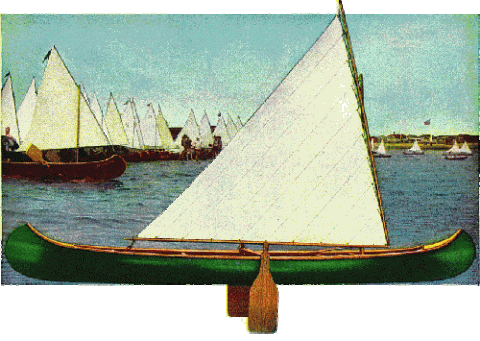
In order to sail a canoe, three basic units are required; a means to harness the wind, lateral resistance, and some way to steer.
Catch the Wind
In order to harness the wind, the following components are required:
- Sail - The typical Old Town rig is a 55 square foot lateen, other sizes were available. Note that if you intend to sail your canoe in ACA races, you are required to use the ACA 44 square foot lateen sail.
- Mast - The typical Old Town mast is shaped from a solid piece of spruce. It is 2" in diamter at the base and tapers to 1 ¾ at the head. The base of the mast has a square tenon to fit into the mast step that is 1-5/16" square. There is a slot milled into the head of the mast 2¾" x 9/16", centered 3½" from the head of the mast. A 1¾ brass sheave is mounted in this slot for the halyard. Overall length of the mast varies depending on the size of the sail.

- Mast Step - This is a block of wood mounted to the floor of the canoe, and usually through-bolted to the keel. There is a square hole milled into it that receives the mast tenon.
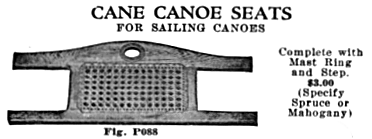
- Mast Partner - This is the member that supports the mast at the level of the gunwales. In Old Town canoes, this is usually in the form of a mast seat. The seat will have a brass ring around the mast hole.
- It may also take the form of a mast thwart:

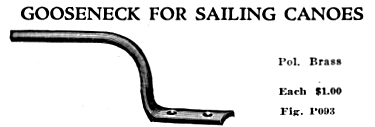
- Spars -
- Gooseneck - Brass fitting that is fastened to the boom. It holds the boom to the mast while allowing the boom to swivel
Lateral Resistance
Some form of lateral resistance is required. The purpose of lateral resistance is to prevent the canoe from sideslipping, and to redirect the winds energy into forward motion. In many larger boats, a keel, centerboard, or daggerboard provide lateral resistance. In canoes, leeboards are most commonly used.
- Leeboards and Bracket - The standard Old Town leeboard set-up included two leeboards and an adjustable bracket. The bracket clamps onto the gunwales. It is adjustable in width, to allow the leeboards to be correctly positioned fore-aft, regardless of the changing beam of the canoe.
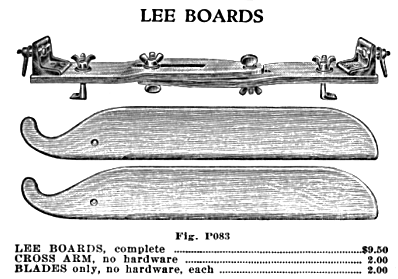
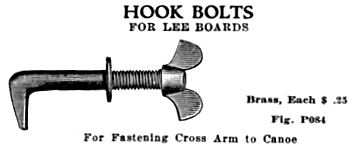
- Hook Bolt - This is an L-shaped bolt with wing nut that is used to clamp the leeboard bracket to the gunwales. Old Town also used this style bolt on their portage yoke.

- Thumb Screw - this is used to hold the two halves of the leeboard bracket together. They ride in slots in the bracket, which allows the bracket to be adjusted for width.
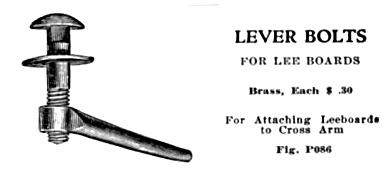
- Lever Bolt - the nut is also known as a tail nut. This is used to hold the leeboards to the angle braces.
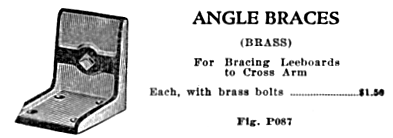
- Angle Brace - the cast brass fitting that mounts on the wood portion of the leeboard bracket, to which the leeboards are fastened
Getting from Here to There - Steering
- Paddle - This is the simplest way, and a good one to know if your other steering gear becomes disabled. The paddle is held on the lee side of the canoe. Raising and lowering it in the water steers the canoe.
- Rudder - The rudder is mounted to the stem by way of cast rudder mounts. The rudder and its cross arm are made of wood. Steering lines fasten to the cross arm, and usually lead through blocks mounted under the center thwart. Steering is done by pulling the rope in one direction or the other. The shape of the Old Town rudder changed over the years.
